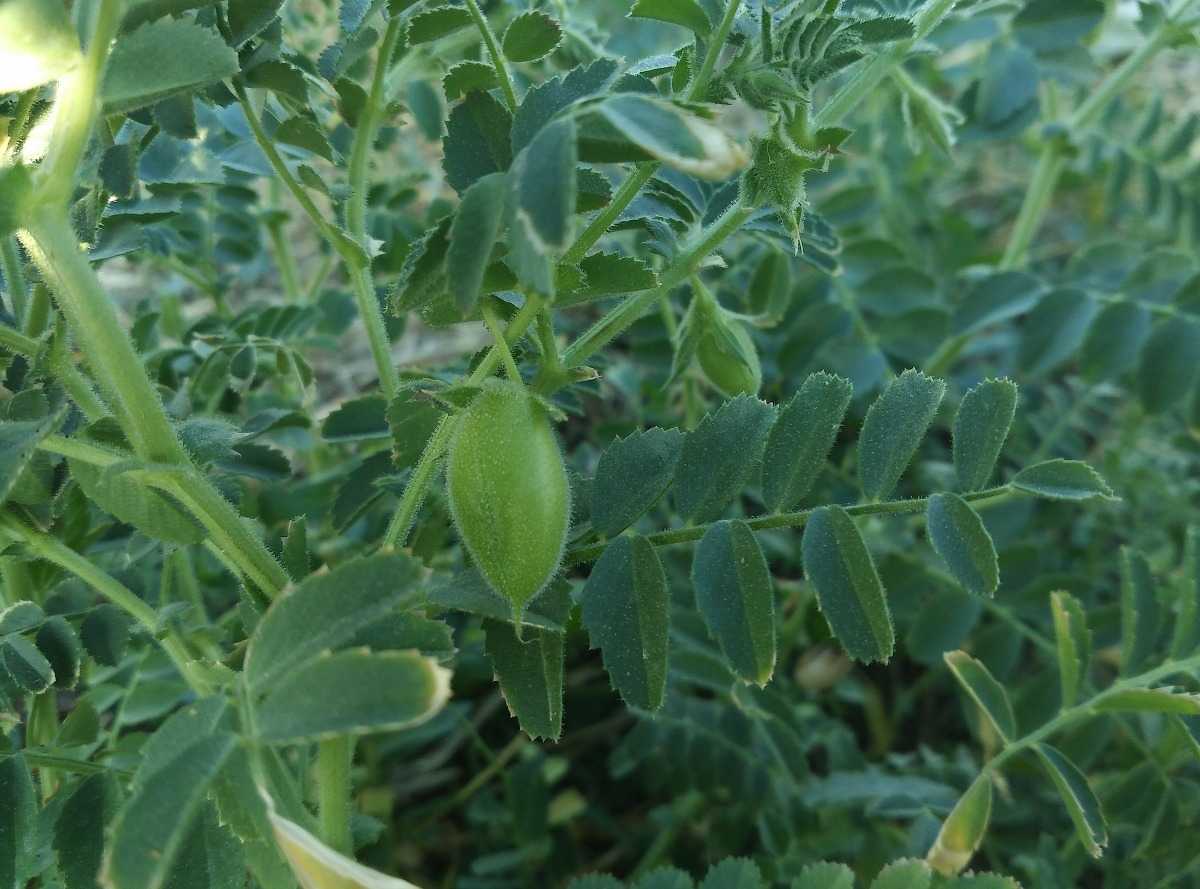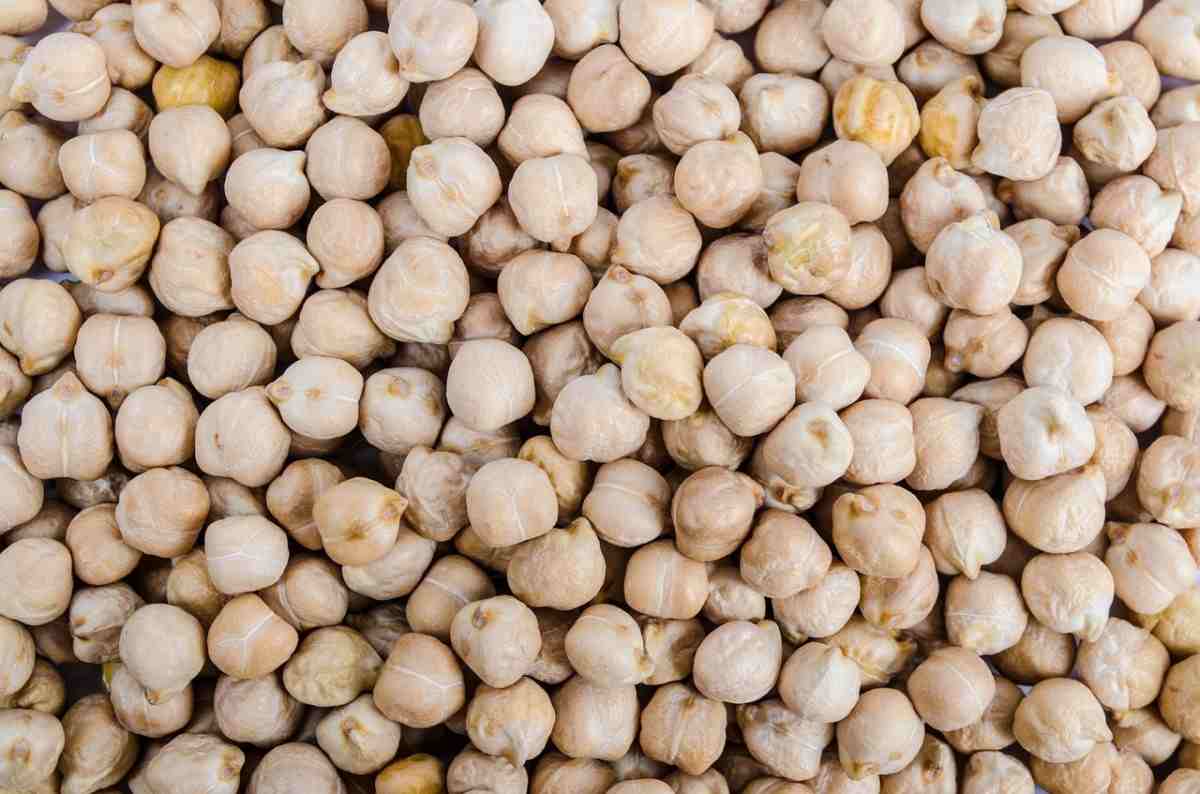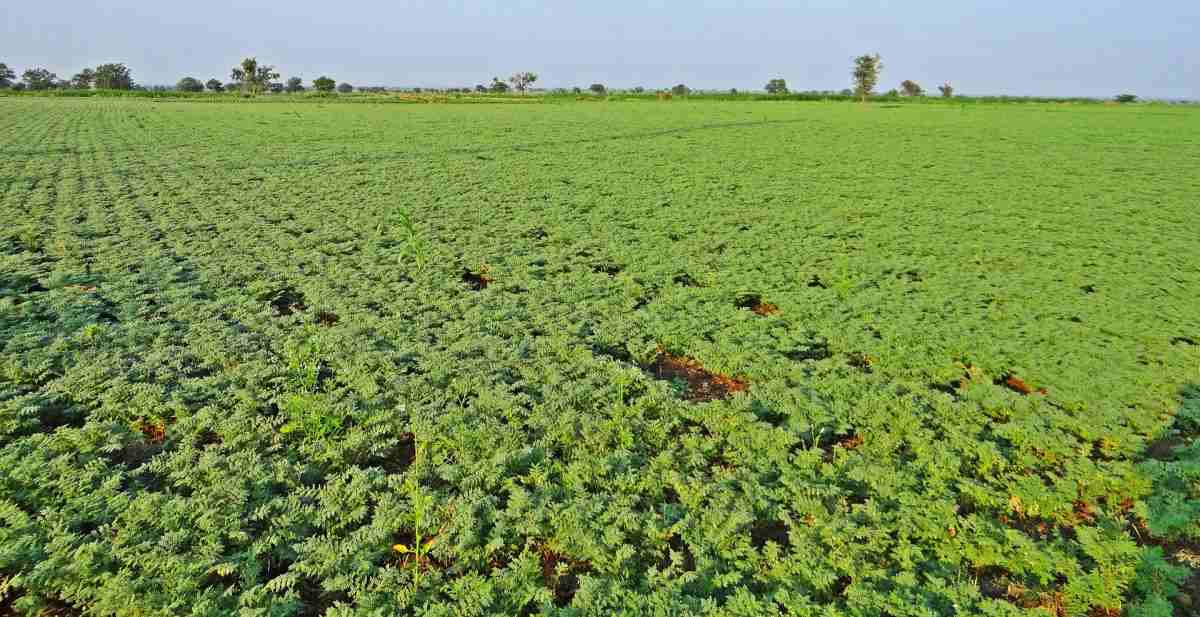Introduction to Chickpea seed germination
Chickpeas are an annual leguminous crop, used for both human and animal. It is a cool-season legume crop and is grown in several countries worldwide as a food source. The seed is the main edible part of the plant and is a rich source of protein, carbohydrates, and minerals particularly for the vegetarian population. It is the third most important food legume crop and India is the largest producer contributing to 65% of the world’s Chickpea production. Chickpea, being a legume and belongs to the botanical family of Fabaceae, subfamily Faboideae. Chickpeas offer a variety of health benefits, such as improving digestion, and reducing the risk of several diseases. In this article we also discussed below topics;
- How do you germinate Chickpea seeds
- Chickpea seed germination temperature
- How do you germinate Chickpea seeds
- How long does Chickpea seed take to germinate
- Process for germinating Chickpea seeds
- Chickpea varieties in India
- Chickpea seed germination period
A step by step guide to Chickpea seed germination

Chickpea is a dry pulse crop or as a green vegetable with the former use being most common. Chickpea seeds average about 20% protein, 5% fat, and 55% carbohydrate. Seeds are sold in markets dry or canned. Chickpea does best on fertile sandy, loam soils with good drainage. Good drainage is necessary because even short periods of waterlogged fields reduce growth and increase susceptibility to plant roots. The Chickpea seeds are spherical in shape, wrinkled, and with a pointed beak. They vary a great deal in size as well as in color and color of seed may vary from white, light fawn, yellowish-orange, brown, dark brownish, and with a little bluish tinge. The seed coat can be smooth or puckered and wrinkled. The cotyledons are thick and yellowish.
Different types of Chickpea
There are mainly two distinct types of Chickpea are recognized. Worldwide, two main types of Chickpea, Desi, and Kabuli are cultivated. Kabuli types, grown in temperate regions, are large-seeded and consumed as a whole seed, whereas Desi types, grown in semiarid tropical and subtropical regions, are mainly consumed as split dhal or turned into flour. Gram commonly called Chickpea or Bengal gram is the most important pulse crop of India. Chickpea is used for human consumption as well as for feeding to animals.
Desi Chickpea or Brown Gram – Chickpeas with colored and thick seed coats are known as desi type. The common seed colors include different shades and combinations of brown, yellow, green, and black. The seeds are generally small and the flowers are normally pink and the plants show various degrees of anthocyanin pigmentation, although some desi types have white flowers and no anthocyanin pigmentation on the stem. The desi types account for 80 to 85% of the Chickpea area. In this group the color of the Chickpea seed ranges from yellow to dark brown. Seed size is usually small and it is the most widely grown group. Plants are very small with good branching ability.
Kabuli Chickpea or White Gram – The Kabuli Chickpeas are characterized by white or beige-colored seed with ram’s head shape, thin seed coat, smooth seed surface, white flowers, and lack of anthocyanin pigmentation on the stem. As compared to desi types, the Kabuli Chickpeas have higher levels of sucrose and lower levels of fiber. The Kabuli types have large-sized seeds and receive a higher market price than desi types. The price premium in Kabuli types increases as the seed size increases. In this group the color of the seed is white. Grains are bold and attractive. The yield potential of this group is poor as compared to the desi type. Plants are taller than the desi gram and stand more or less erect.
These are the worldwide Chickpea varieties are;
Desi Chickpea varieties are Amethyst, Flipper, Kyabra, Iimbour, Moti, Yoker, Howzat, Genesis TM 508, Genesis TM 509, CICAO 503, Sonali and Tyson.
Kabuli Chickpea varieties are Bumper, Garnet, Kaniva, Kimberley, Macarena, Almaz, Genesis TM 079, Genesis TM 090, Genesis 114, Genesis TM 425, Kaniva, Nafice, and Bumper.
In case if you miss this: Flaxseed Germination, Temperature, Process.
Chickpea seed
Superior seed quality is required for successful Chickpea production. Use seed with both high seed germination and vigor, and is disease-free. It is important to have seed tested by an accredited seed-testing laboratory to determine the percentage of seed germination, seed purity, and seed-borne disease levels. A 1,000 seed test provides a more accurate test of seed-borne diseases than the standard 400-seed test. The application of certain herbicides before harvest can also affect seed germination and vigor. Seed from fields treated with pre-harvest glyphosate must be avoided.
The seed preparation of Chickpea
Good quality certified Chickpea seed must always be used. This seed must be high in germination percentage (over 85%), free of damage, and free of weed seeds. The good quality seed does not require to be treated with an insecticide or fungicide, but if you have had past problems with Pythium or Rhizoctonia rots in fields you may need to treat seed before planting.
Plan to purchase the special strain of nitrogen-fixing bacteria necessary for Chickpea if you are planting this crop for the first time in a field. It can be purchased in peat or granular form; the latter type must be used if seed is fungicide treated. Follow instructions supplied with inoculants to ensure its proper use.
A smooth seedbed with most of the previous crop residue incorporated is best. This will allow the proper depth of planting as well as good seed-soil contact, which is essential for rapid seed germination and emergence. If moisture is short keep deep preplan tillage to a minimum to prevent excessive drying in the top 2 to 3 inches of soil.
The seed germination time and temperature of Chickpea
Under optimum moisture and temperature conditions, Chickpea seeds imbibe water quickly and germinate within a few days, providing temperatures are more than 0°C. Emergence occurs 7 to 30 days after sowing, depending on soil moisture and temperature conditions and depth of sowing. Chickpea seed germination was carried out over about 6 days.
Chickpea seedling emergence
Chickpea seedlings emergence occurs in 7 to 15 days after sowing, depending on soil temperature and sowing depth.
Seeding date and method of Chickpea
Chickpea is frost tolerant as seedlings so seeds must be planted in early to mid-April. Later planting dates result in shorter plants, less crop yield, and late maturity of late formed flowers and pods.
Chickpeas can be planted at row spacing between 6 and 40 inches. Seeds should be planted 1 to 2 inches deep using a drill or planter which can deliver the Chickpea seed without damage. Good seed-soil contact must be ensured with a press wheel if possible.
The sowing method and sowing depth of Chickpea seeds
Sowing is done on conserved soil moisture. Pre-sowing irrigation can be needed if the available soil moisture is not adequate for germination. Kabuli Chickpea must never be irrigated immediately after sowing, particularly in deep black soils. This is because the Kabuli Chickpea seeds have thin seed coats and deteriorate faster as compared to desi type and also more susceptible to seed rot and seedling damping off. The seed must be sown deeply enough to make contact with moist soil. A depth of 5 to 8 cm seems to be ideal for the emergence of Chickpea. Drilling the seed is commonly practiced and high rainfall areas seed is broadcast on flat seedbed. In India, mid-October to mid-November is the ideal time for sowing Chickpea. Any deviation from this period causes a conspicuous reduction in crop yield. Though, in rice-based cropping systems, Chickpea sowing is delayed beyond the optimum date due to the late harvest of rice.
The spacing of Chickpea or Chickpea plant distance
Line sowing method is a must in the crop grown for seed production as it facilitates intercultural operations, rouging, and field inspection. The row-to-row spacing of about 30 cm and plant-to-plant spacing of 10 cm is generally used, which give a plant population of about 33 plants per m2 (330,000 plants ha-1). Wider row spacing of about 45–60 cm can be used in large-seeded Kabuli Chickpea and irrigated crops (both desi and Kabuli types), which are expected to have greater plant width.
Sow Chickpeas 1½ to 2 inches deep and spaced about 3 to 6 inches apart. Thin successful plants to about 6 inches apart; cutaway thinned plants at soil level with scissors so as not to disturb roots. Space rows 18 to 24 inches apart. Do not soak Chickpea seed before sowing and avoid heavy watering after sowing to keep seeds from cracking. Chickpeas allowed to produce a bit crowded will offer each other support.
The seed rate and seed treatment of Chickpeas
A seed rate of 75-100 kg per hectare depending upon seed size can be sufficient for one hectare. The seed should be placed 8-10 cm deep.
Use a seed rate of 15-18 kg/acre for desi variety and 37 kg/acre for Kabuli Chickpea variety. An increased seed rate of desi gram to about 27 kg/acre in case sowing is to done in the second fortnight of November and 36 kg/acre in case sowing is to be done in the first fortnight of December.
Treat the seed before sowing and treat the 10 Kg Chickpea seed with 250 gm. Rhizobium biofertilizer. Treat the 10 Kg seed with 250 gm. phosphate solubilizing bacteria. To control the wilting of Chickpea, treat the 1 Kg of seed with 5 gm. of Trichoderma.
Process of Chickpea seed germination
You should not miss this: Maize Seed Germination, Time Period, Procedure.

Good germination and seedling emergence are important prerequisites for a successful crop, and soil and air temperature is one of the key factors affecting the seed germination process. Germination testing is one process for evaluating seed lots for quality. Germination addresses the seed’s ability to develop into a normal and healthy plant under favorable field conditions. This testing can be misleading because seed can germinate well in the lab due to optimum conditions being present or to the fact that the seed has every opportunity to develop into a normal healthy seedling.
Chickpea seeds germinate within a few days, providing temperatures are more than 0°C. Chickpeas will not germinate in soils with temperatures below 0°C. Generally, the longer a germinating seed of a sensitive species is exposed to a chilling temperature range, the greater the injury it will sustain. Desi types generally suffer less damage from low-temperature ranges at germination than Kabuli types. Visual symptoms of chilling injury at the seedling stage can include the inhibition of growth, and the browning and desiccation of coleoptiles and undeveloped plant leaves. The effects of chilling range temperatures on the developing seedling are related to membrane injury and contain reduced respiration and photosynthesis and loss of turgor, resulting in wilting and cold-induced water stress. Exposure to chilling range temperatures during early growth of established seedlings can exert macroscopic formative effects on leaf shape and size, height, root development, and floral initiation. Chickpea seed germination is hypogeal, with the cotyledons remaining below the soil surface. This enables it to emerge from sowing as deep as about 15 cm. In arid regions, Chickpea is sown deep as surface moisture is inadequate to allow sufficient crop establishment.
One of the environmental constraints for the germination is the temperature that can negatively affect the seed germination. The optimum temperature for maximum germination is between 10 and 15°C. Low-temperature ranges are a major constraint for improving the yield of Chickpea in numerous regions of the world. In one study, all Chickpea seeds were able to germinate on a wide thermal range of about 15–35°C. Though, the thermal optimum was approximately 20–25°C with 80 to 100% of seeds germinated within 7 days between 10 and 30°C. Salinity is one of the major stresses, particularly in arid and semiarid regions, which severely limit crop production. Salinity impairs germination, reduces nodule formation, retards plant development, and reduces crop yield. Salinity affects seed germination and physiology of crops due to; the toxic effect of ions on the viability of embryos, and by altering osmotic potential, preventing water uptake.
The yield of Chickpea
The average Chickpea yield is 20-25 quintals per hectare though it has a maximum yield potential of 30 to 35 quintals per hectare.
Commonly asked questions about Chickpea cultivation

How long does it take to grow Chickpeas?
The Chickpea is a cool-season annual that requires about 100 days to reach harvest. Sow Chickpea seeds in the garden about the date of the average last frost in spring or slightly earlier.
How many Chickpeas does one plant produce?
Grow 4 to 8 Chickpeas plants per each household member and the Chickpea is a cool-season annual that requires 100 or so days to reach harvest.
In which type of soil Chickpea is grown?
Chickpea crops are best suited to well-drained loam and clay loam soils that are neutral to alkaline pH level 6.0 to 9.0 and have good water holding capacity.
How much water do Chickpeas need?
The Chickpea seeds should sprout within 10 to 14 days. Water regularly and evenly throughout the growing season to maintain the soil moist. In cooler areas, plants will need about an inch of water per week; in warmer climates, they need double that amount.
The conclusion of Chickpea seed germination
Well, it is very important to select a quality seed for a better seed percentage of seed germination and yield. You may also like this: How to Make Money from Dal Mill Business.